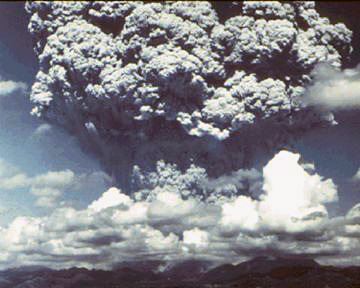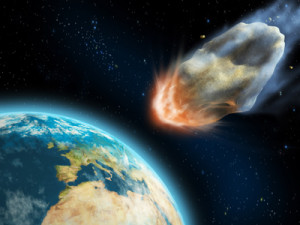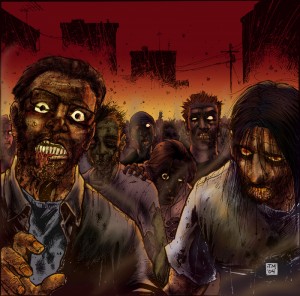Bankers, governments and investors are preparing for Greece to stop using the euro as its currency, a move that could spread turmoil throughout the global financial system.
Category Archives: SHTF
US CIVIL DEFENSE – ZOMBIE SURVIVAL VIDEO
US CIVIL DEFENSE – ZOMBIE SURVIVAL VIDEO
Everything you need to know from the US Civil Defense
IF YOU THOUGHT ZOMBIES WHERE TOUGH – Try Surviving Yellowstone’s super volcano
For preppers, it’s the ultimate end game: surviving the eruption of Yellowstone’s super  volcano.
volcano.
While some folk worry about an asteroid strike bringing about the end of the world as we know it, as scientists say it did for the dinosaurs 65 million years ago, North America is actually sitting on its own extinction-level event waiting to happen.
“Everything would be wiped out; it would take years for the climate to recover and decades for the rivers to clear up because everything would be choked with volcanic ash for a wide area around the eruption site,” said Kelly Russell, professor of volcanology at the University of British Columbia. “The southern latitudes of Alberta, Saskatchewan and Manitoba would all see ash cover, how thick it would be depends on the winds and the amount of magma.”
Russell stresses that such super eruptions are extremely rare — the last one happened before human civilization — but that they can and do happen, and Yellowstone, in Yellowstone National Park in Wyoming, is an active field that has seen three massive eruptions.
He compares Yellowstone to Mount St. Helens in Washington state in 1980.
“It produced one cubic kilometre of magma, and we saw ash fall from it in southern B.C., a small amount, but it was there, and when we look at the very largest eruptions that have taken place at Yellowstone, they can spew out a thousand cubic kilometres, so that’s a thousand times larger than the Mount St. Helens eruption that’s in everybody’s minds.”
Russell points out that two feet of ash from the Crater Lake eruption in Oregon 7,700 years ago can be found in Oliver, B.C., and in the banks of the Bow River in Calgary. He says if Yellowstone cuts loose, the southern Canadian prairies could get covered in many feet of ash, and the American states closest to Yellowstone would be smothered with an even thicker layer of the sterile rock powder, killing off livestock and leaving them unable to grow food.
“The ash is terrible, take a window and grind it into a coarse flour, then breath that in, it does terrible things to the human body. It would be important to have masks and filters, if you were trying to survive it,” Russell said. “The United States would stop being a food-exporting nation and starting being a food-importing nation.”
Yellowstone’s volcano doesn’t have the classic menacing cone shape, so many people don’t know that a magma chamber bigger than New York City lies beneath the steaming surface.
640,000 years ago, animals similar to elephants, rhinoceroses and zebras roamed the plains of the United States when Yellowstone blew — and it took out the animals and every other living thing that couldn’t fly away from the blast.
Scientists estimate Yellowstone’s volcano explodes every 600,000 to 700,000, and some say the time could be coming for another eruption. If it blows, the chances of survival sound bleak, but that’s not stopping some survivalists from preparing.
“Some people who visit there say there are more hot springs popping up there, and there is more of a sulphur smell that’s stronger than ever. You take from it what you want and I just pay attention to it a little more than the average person, just in case,” said Jason Charles, a firefighter in New York City. “I don’t want it to be a curve ball we don’t see coming. I keep it in the back of my head.”
Charles was a paramedic on 9/11 and saw thousands of people struggling to breath through the toxic dust. He has special dust and ash filters for his gas mask in case of another NYC disaster, or if Yellowstone blows.
“I know some people who have bought UV lights, in case they need to grow their own food – but that’s also assuming that the power grid stays up, but then there’s a space issue, how much could you grow?” he said. “It’s better to store food that will last.”
Charles has a one-year supply of food for his family, including his wife and four children. Meal-ready-to-eats (MREs), canned pasta and lots of canned fruit are stuffed into his apartment and his storage locker. He prepares for all sorts of disasters because he says no one should depend on the government to save them.
“The government couldn’t handle (Hurricane) Katrina. Compared to Yellowstone, Katrina was a drop in the bucket,” he said. “I have always heard as a rumour, they would wait for the masses to die and whatever survivors are left, that’s who they’d take care of, because they can’t take care of hundreds of millions of people we have living here in the United States.”
Jake Lowenstern, a geologist with the U.S. Geological Survey, is the guy in charge of the Yellowstone volcano observatory.
“Worst-case scenario, a super eruption is a thousand cubic kilometres of material gets sent out of the magma chamber. When that happens it’s going to send out a lot of ash, and it circles the globe and changes the climate for years, drops the temperature for a few years,” Lowenstern said.
He said while a super eruption is highly unlikely, and even if it does happen not many would survive, it doesn’t hurt to prep.
“Things you can do to prepare for one kind of disaster are useful for any kind of disaster: lots of food, water, medical supplies and batteries on hand, and for an eruption, add good masks, air filters and weather stripping to keep the ash out of homes.”
Massive eruptions of the past:
— Archeologists say human beings barely survived the last super eruption on Earth. 74,000 years ago, Toba blew up on the Island of Sumatra. It cloaked the planet in sulphur, reducing the temperature by 20 degrees, wiping out growing seasons with snow cover nearly all year and causing mass starvation. Geneticists say the disaster reduced the human population to as few as 1000 people, thus causing the genetic similarity between individuals which is traced to the same time period.
— A volcanic eruption has been blamed for plunging civilization into the Dark Ages and triggering the bubonic plague. In his book Catastrophe, archeological journalist David Keys pinpoints a Krakatoa explosion in 535 AD. He says with the power of two billion Hiroshima bombs it darkened the sky and caused drought and flooding all around the world, including in Northeast Africa, which led to a bumper crop of rodents that passed their infected fleas onto rats and mice on European ships docked for trade off of southern Egypt, beginning the spread of the plague of Justinian.
— In 1815, the Tambora volcano erupted in the East Indies. Global temperatures dropped. Europeans and North Americans called it a “year without summer.” Snow fell in New York in June. Frost was recorded in each of the summer months and crops failed. 200,000 people died in Eastern and southern Europe from starvation and typhus.
— In 1783, Iceland’s Laki Volcano erupted. 9,000 people died in Iceland and thousands more died around the world from crop failure, disease and starvation. Temperatures dropped 13 degrees Celsius.
— Mount Pinatubo erupted in 1991 in the Philippines, a comparably small explosion, ejecting 20 million tonnes of sulphur. Scientists say it reduced global temperatures by about 2 degrees.
ASTEROID COLLISION PENDING – HOW CAN WE AVOID IT?
 Steve Carell’s new movie, Seeking a Friend for the End of the World, opened yesterday. Despite its being billed as a comedy (one with a rather dreary basis), the movie has gotten a lot of people thinking about one thing: if a killer asteroid was headed toward Earth, is there anything we could do as a species to avoid doomsday?
Steve Carell’s new movie, Seeking a Friend for the End of the World, opened yesterday. Despite its being billed as a comedy (one with a rather dreary basis), the movie has gotten a lot of people thinking about one thing: if a killer asteroid was headed toward Earth, is there anything we could do as a species to avoid doomsday?
The unfortunate truth is that the world would probably be helpless to do anything.
When doomsday scenarios are considered, planners usually give months or even years advance notice time to come up with a plan to divert the colliding body and save the world. Now, as the events of last week show, huge asteroids can, literally, just pop out of the cosmos and into our neighborhood just a few days after discovery.
Right now, there are millions of known asteroids (and untold numbers more undiscovered) floating around the solar system, mostly between Mars and Jupiter, safely out of Earth’s way. Of the millions of asteroids, over 8,800 are classified as near-Earth. Of the near-Earth objects, just over 4,700 are considered as potentially hazardous, which is defined as an object over 500 feet in diameter that can come within 4.6 million miles of Earth.
Obviously, a metallic space rock 500 feet across traveling at up to 15 miles per second could do an immense amount of damage. For comparison, the object (most likely a comet) that caused the Tunguska Incident was probably less than 100 yards (300 feet across) but still leveled forests for over 1,000 square miles.
Needless to say, if a Tunguska-sized object were to hit a populated area, the death toll would be apocalyptic. Large impactor? Worldwide devastation and possibly an end to civilization as we know it. So, if scientists were to discover a doomsday asteroid on a collision course with Earth, could we do anything about it or would we simply have to resign ourselves to a terrible fate and possibly go down in history like the dinosaurs?
The problem with many doomsday scenarios: when contemplating ways to defend our planet, many planners always give several months and often years of notice. Problem: asteroids have a way of sneaking up on us, which is not hard to do considering that there are more people working at the average McDonald’s than there are full-time asteroid hunters manning the world’s observatories. Earlier this year, it was reported that Los Alamos had completed a study wherein nuclear weapons showed promise in deflecting asteroids but, for many, such a scenario should be considered last resort, not first option.
The widely agreed upon solution: early detection, which can only be achieved through a vigilant watch of the skies by skilled astronomers, professionals and amateurs alike.
ZOMBIE OUTBREAK – Woman Tries To Eat Cop
Zombies aren’t real, (or are they)  of course, unless you live in the world of “The Walking Dead”, and even then they’re not called zombies. But “Walker Apocalypse” just doesn’t have the same ring to it. Of course, with all the stories pouring in from around the nation involving bath salts and their pesky, flesh-eating affect on the human brain–9, at last count–it might be prudent to call this the “Bath Salt Apocalypse”, as The Village Voice suggests.
of course, unless you live in the world of “The Walking Dead”, and even then they’re not called zombies. But “Walker Apocalypse” just doesn’t have the same ring to it. Of course, with all the stories pouring in from around the nation involving bath salts and their pesky, flesh-eating affect on the human brain–9, at last count–it might be prudent to call this the “Bath Salt Apocalypse”, as The Village Voice suggests.
Whatever you call it, it’s pretty damn scary. And, I hate to do this to you, but here’s one more story to add to the growing pile.
A Utica, New York police officer responded to a call about a disturbed person at a bar on Saturday night. When he arrived, he found a 41-year old woman sitting in a stairwell with a blank look on her face. When he tried to engage her in conversation, she became agitated and violent and tried to bite him repeatedly, yelling that she wanted to “eat and kill someone”. She was later taken to the hospital, where it was determined that bath salts were indeed the culprit for her insane behavior.
According to their official Facebook page, Utica officers also responded to two different bath salts calls in one day on June 21st; one regarding a man who claimed to be having bath salt withdrawals and chest pains, and the other involving a woman who was taken to the hospital after experiencing “hallucinogenic effects” from the drug. And while most agree that the synthetic drug causes more of a psychosis than hallucinations, it can lead the user to have very realistic visions that are compared to those that come with taking LSD.
With all the stories coming in about the drug’s effects, it’s sort of surprising that people are continuing to use it. Every drug has its share of dangerous side effects, and some can be fatal, but face-eating? Murderous intent? That’s a side effect I believe I’d want to stay away from, even if I enjoyed partaking.
GLOBAL ECONOMIC COLLAPSE – STARTING WITH GREECE
How shock waves will reach the US if Greece drops the euro
Greeks will have to wrestle with a crucial dilemma when they go to the polls for the second time in as many months on June 17 to elect a new government.
Greeks will have to wrestle with a crucial dilemma when they go to the polls for the second time in as many months on June 17 to elect a new government.
A Greek election on Sunday will determine whether it happens. Syriza, a party opposed to the restrictions placed on Greece in exchange for a bailout from European neighbors, could do well.
If Syriza gains power and rejects the terms of the bailout, Greece could lose its lifeline, default on its debt and decide that it must print its own currency, the drachma, to stay afloat.
No one is sure how that would work because there is no mechanism in the European Union charter for a country leaving the euro. In the meantime, banks and investors have sketched out the ripple effects.
They think the path of a full-blown crisis would start in Greece, quickly move to the rest of Europe and then hit the U.S. Stocks and oil would plunge, the euro would sink against the U.S. dollar, and big banks would suffer losses on complex trades.
ACT I
What would Greece’s exit look like? In the worst case, it starts off messy.
The government resurrects the drachma, the currency Greece used before the euro, and says each drachma equals one euro. But currency markets would treat it differently. Banks’ foreign-exchange experts expect the drachma would plunge to half the value of the euro soon after its debut.
For Greeks, that would likely mean surging inflation — 35 percent in the first year, according to some estimates. The country is a net importer and would have to pay more for oil, medical equipment and anything else it imports.
Greece’s government and banks currently survive on international loans, and if it dropped the euro, the country would probably be locked out of lending markets, says Athanasios Vamvakidis, foreign-exchange strategist at Bank of America-Merrill Lynch in London. So the Greek central bank would need to print more drachmas to make up for what it could no longer borrow from abroad.
That’s one reason analysts say the switch to a drachma would lead the country to default on its government debt, possibly triggering losses for the European Central Bank and other international lenders.
Most assume foreign banks would have to write off loans to Greek businesses, too. Why would Greeks pay off foreign debts that effectively double when the drachma drops by half?
Say a small shop owner in Athens has a €50,000 business loan from a French bank. She also has €50,000 in savings in a Greek bank. The Greek government turns her savings into 50,000 drachma.
If the new currency fell by 50 percent to the euro as expected, her savings would suddenly be worth €25,000. But she would still owe €50,000 to the French bank.
European banks would take a direct blow. They’ve managed to shed much of their Greek debt but still held $65 billion, mainly in loans to Greek corporations, at the end of last year, according to an analysis by Nomura, a financial services company. French banks have the most to lose.